Dear Portfolio Assessment Committee,
I’m writing to you today to express what I have learned in the course “ENG101- This Place Called India.” To accurately prove that, I will refer to several pieces I have authored over the course of the semester, including My Writing Reflection (MWR), Bruffee’s Collaboration Summary (BCS), The Tales of Hanuman, An Article on Rhetoric (TOH), Contrast (C), Coincidences of an Indian Immigrant (CII), and The Day my Tongue Journeyed to a Firey Hell (JFH). The learning outcomes of this course are to “read, think, write and articulate critically, practice writing as a process, produce work in various genres, learn conventions of academic writing, and talk and write about various aspects of India, etc.” which I believe I have done to the fullest extent.
When I began this class, my writing lacked depth. Even between my first post and next few there is an immediate change in style and sophistication. In the first piece I wrote, my writing is clunky, awkward and very informal “We were allowed to write about absolutely anything so I thought about what kinds of topics I hadn’t explored yet and what kinds of things I find interesting before settling on gambling” (MWR). I learned the most from the “Understanding Rhetoric” book, especially when it came to pathos, logos, kairos, and ethos. I also learned more about different literary tools like diction, consonance, metaphors and others, which I used in my review of Indian comic books.
“Additionally, Pai uses diction often to emphasize the fortitude of the characters and the objects about which he writes about. The word “mighty” is used on almost every other page to describe the way Hanuman roars, the breadth of the ocean trying to be crossed, beautiful elephants, and even vicious snake arrows. The word is repeated so often to show the significance of the object being described in relation to the story and it also evokes a variety of emotions in the reader. Even the descriptive words Pai uses to describe the end of a battle before the beginning of “Hanuman to the Rescue” denote the importance of the event: “The evil enemy had been destroyed. Virtue had won over greed and lust.” The generous words and assonance used in these frames alert the reader to the gravity of the event” (TOH)
In this review, I had to work on rhetorical analysis. The lowest grade I received in this class was on the initial partner thesis for this project, and that was because we ignored the word “rhetorical” and wrote a thesis like the ones we were so used to in high school. We together had to rewire the way our brains automatically settled on a literary review to be open to different kinds of analysis.
I’ve also learned to write in multiple genres. In high school, I mainly wrote literary essays based on assigned books, but in this class I wrote in every genre imaginable, even a short essay about genre itself. I’ve never done a photo essay before, so my piece on Contrast was a new experience for me. It forced me into a space I wasn’t necessarily comfortable with, but it ended up being one of the pieces that I’m most proud of this semester. I was most worried about not being able to identify a theme because of my lack of a base knowledge of Indian culture, but after flipping through some of the collection I noticed the subtle social, racial, economic, and plain color contrasts. This class has helped me pick up on the simpler details in scholarly works that I wouldn’t have noticed before. I’ve also learned to write for different audiences, I’ve had to present to my classmates, to a corporation, and to the general public via my blog. Writing in all of these genres has broadened my horizons and expanded my skills as a writer.
One of the skills I’ve developed the most in this class is revision. I used to give my essays to my parents, follow their editing advice and then turn in my work without reading it all the way through, as mentioned in MWR. The structure of this class necessitates revision through peer review and submitting multiple drafts, which is where I’ve learned about my writing the most. It’s in these revisions I catch little grammatical errors and endless run-on sentences I normally wouldn’t see until my assignment has been graded and I’ve lost the points. Reading my papers over again also lets me see my sometimes shallow arguments. When writing a paper, you never think your argument is wrong since you have it fully thought out in your head; however, when reading a paper, it is much easier to spot holes and catch thin reasoning. For this reason, my writing has become deeper and more thoughtful than it used to be. Revision is necessary in good writing, it’s impossible to write a perfect paper in one draft.
In this class not only have I learned about my writing, but about India as a culture. I’ve read short stories, intellectual arguments, advertisements, scholarly journals, and pointed interviews about different aspects of Indian life. I’ve learned about cuisine, religion, history, and many more areas. It has definitely piqued my interest, since India is a nation I’ve never visited but always wanted to. I feel as though this semester I’ve been immersed in such a rich culture and the only way to find closure in this course would be to visit India, a tough challenge, but one I will complete one day. I found this lack of experience especially difficult in the Ad Campaign project, where I had to advertise to tourists and make them want to visit India. It felt wrong to advertise for a country that I’d never been to myself, yet it was still one of my favorite projects as it combined multiple genres of writing together into one portfolio-like submission.
I’ve also learned more about critiquing others work, be it scholarly or peer work. I didn’t used to know how to intelligently string together thoughts when summarizing others’ work, but this class has taught me how, especially with Bruffee’s piece on collaboration, “At the end of the day he believes every student should understand that to truly know something, they must be able to write about it intelligently enough to satisfy their community of peers, emphasizing the meaning of social learning” (BCS). This was an extremely difficult read as it was lengthy and written at a professional level, but after reading it through a few times the arguments shined through. I also have learned how to edit my peer’s work. In this type of revision, I focused on constructive criticism. With an academic journal you can agree or disagree with the author and it’s perfectly acceptable, but with your fellow students critiques are more about how to improve each others’ work.
I truly believe this class has benefitted me as a writer, and will serve as a base knowledge for the rest of my college career and even beyond. Without this class I wouldn’t be as knowledgeable about writing in other genres and rhetorical composition, critical thinking and analysis, and self reflection.
Sincerely,
Shauna Brandman
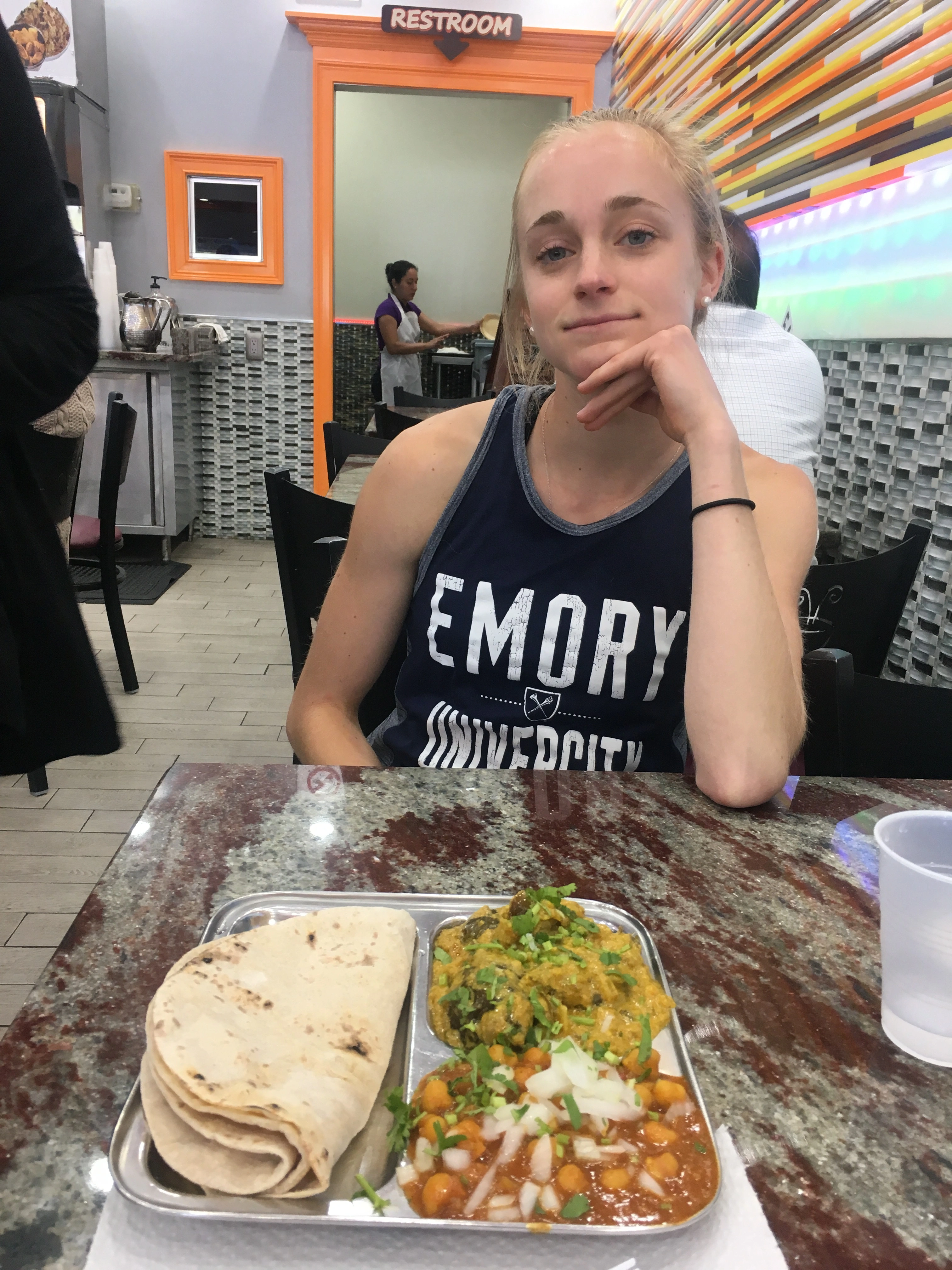
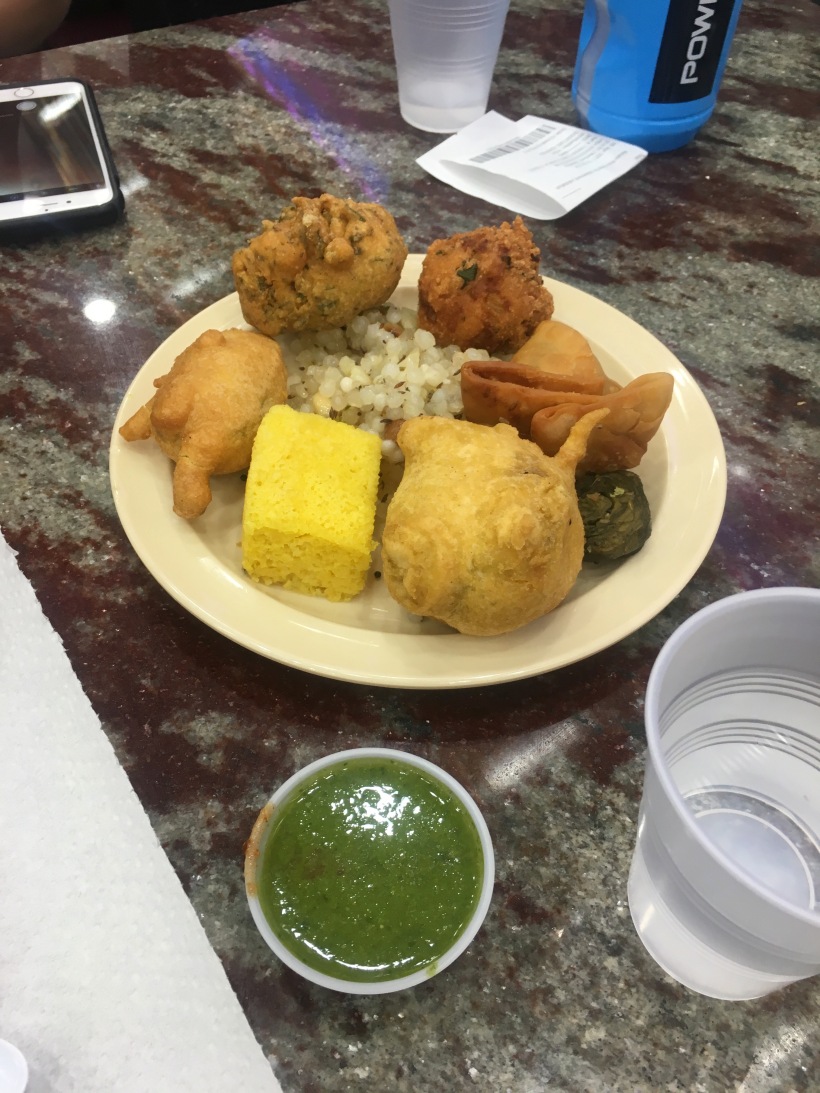 Next we ordered the mixed appetizer platter figuring it would be a good way to try lots of things and our server assured us nothing was too spicy in it. We started with the potato samosa was delectable, the outside had a nice crunch and the inside was just spicy enough to taste and warm. Next was the Mirch Chaat which was a deep fried green pepper covered in chickpea flower, which made Kaitlyn turn a hellish shade of red. After seeing her almost in tears at the spiciness, I decided to skip this one and go for the Daal Vada. This had very little flavor, consisting of fried spices, herbs and dough rolled in chickpea flour, with a very spongey texture. I tried dipping this into the green chickpea sauce which made a great crossover dish! Next up was the Khaman Dhokla, chick pea flour cakes. These were very buttery and had a strange texture and smell. After that was the Potato Vada, I found this to be very spicy as I bit into a pepper flake. This dish was fried potato, but missed the crunch of a good fried dish! Then we had the Methi Gota, made from besan chickpea flour and benugreek leaves. I started off by calling this my favorite, but as I took more bites, the spice crept up on me. I enjoyed the initial flavor and texture, but soon described my tongue as having “third-degree burns.” I nearly cried as I drank all of my water in one swift motion and ate a piece of roti plain to try to cover it. The pain in my tongue did not recede until we arrived back on Emory’s campus unfortunately. While I was traumatized, Kaitlyn kept moving so I caught up to her with the Kabudana Kichadi, what seemed like chewy gummy balls, with a slightly herbal flavor. I asked the server what they were and did not recognize any of the ingredient’s names. Last was the Patra, a curled green colocasia leaf which we both detested very much, whose flavor reminded me of burnt rotting vegetables.
Next we ordered the mixed appetizer platter figuring it would be a good way to try lots of things and our server assured us nothing was too spicy in it. We started with the potato samosa was delectable, the outside had a nice crunch and the inside was just spicy enough to taste and warm. Next was the Mirch Chaat which was a deep fried green pepper covered in chickpea flower, which made Kaitlyn turn a hellish shade of red. After seeing her almost in tears at the spiciness, I decided to skip this one and go for the Daal Vada. This had very little flavor, consisting of fried spices, herbs and dough rolled in chickpea flour, with a very spongey texture. I tried dipping this into the green chickpea sauce which made a great crossover dish! Next up was the Khaman Dhokla, chick pea flour cakes. These were very buttery and had a strange texture and smell. After that was the Potato Vada, I found this to be very spicy as I bit into a pepper flake. This dish was fried potato, but missed the crunch of a good fried dish! Then we had the Methi Gota, made from besan chickpea flour and benugreek leaves. I started off by calling this my favorite, but as I took more bites, the spice crept up on me. I enjoyed the initial flavor and texture, but soon described my tongue as having “third-degree burns.” I nearly cried as I drank all of my water in one swift motion and ate a piece of roti plain to try to cover it. The pain in my tongue did not recede until we arrived back on Emory’s campus unfortunately. While I was traumatized, Kaitlyn kept moving so I caught up to her with the Kabudana Kichadi, what seemed like chewy gummy balls, with a slightly herbal flavor. I asked the server what they were and did not recognize any of the ingredient’s names. Last was the Patra, a curled green colocasia leaf which we both detested very much, whose flavor reminded me of burnt rotting vegetables.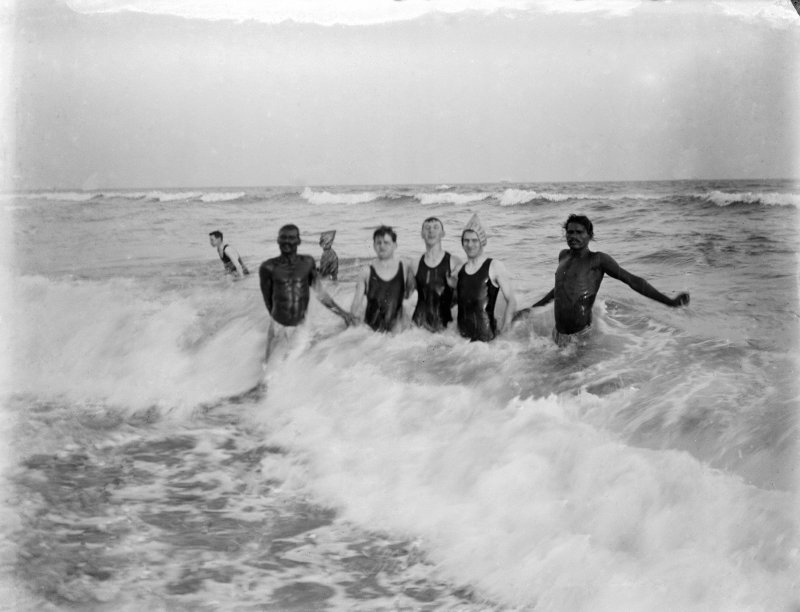 Three white men are guided by two locals, the differences between the groups clearly highlighted by their position (outside/inside), their attire, and even their body weights.
Three white men are guided by two locals, the differences between the groups clearly highlighted by their position (outside/inside), their attire, and even their body weights.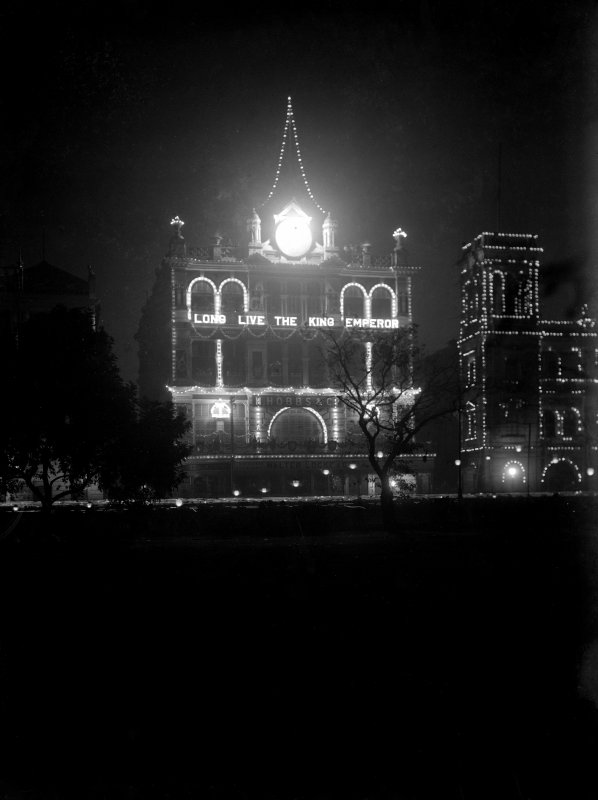
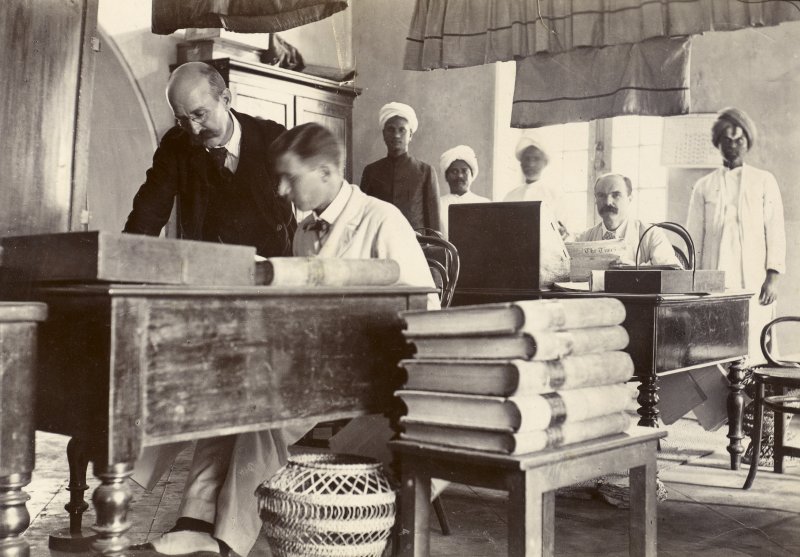
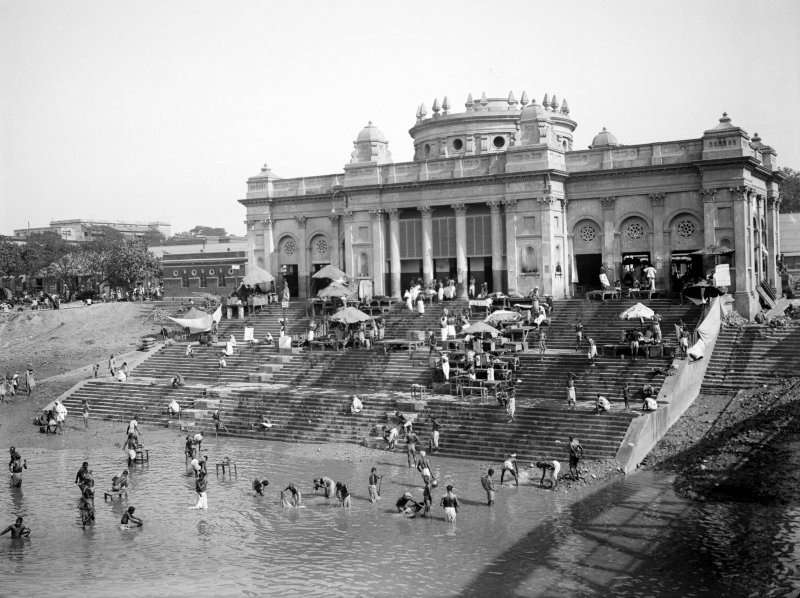
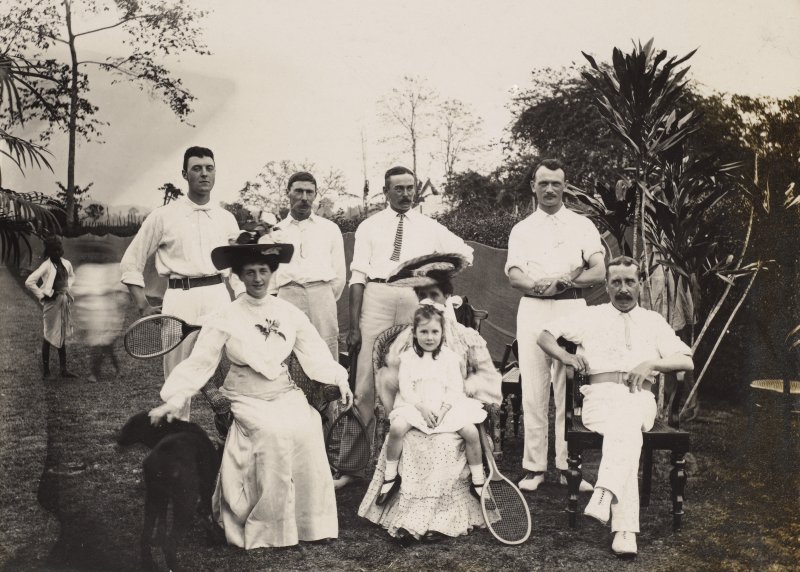
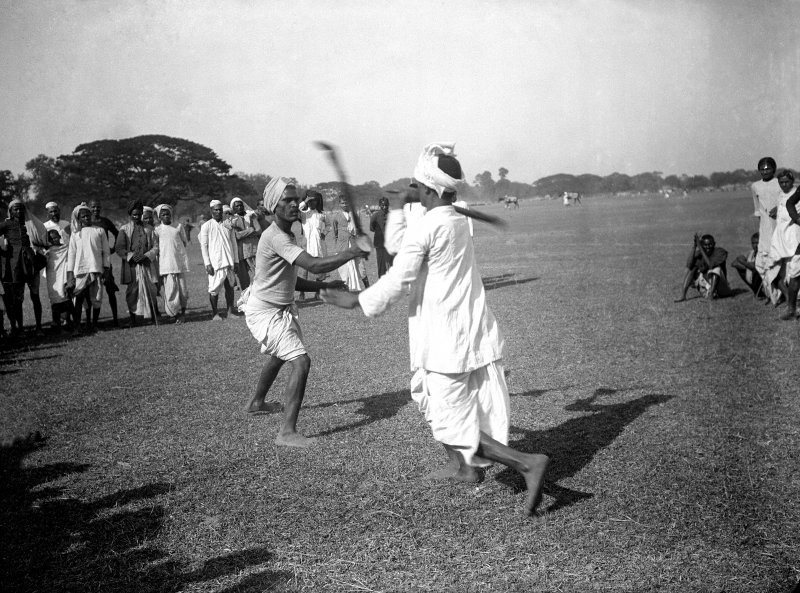
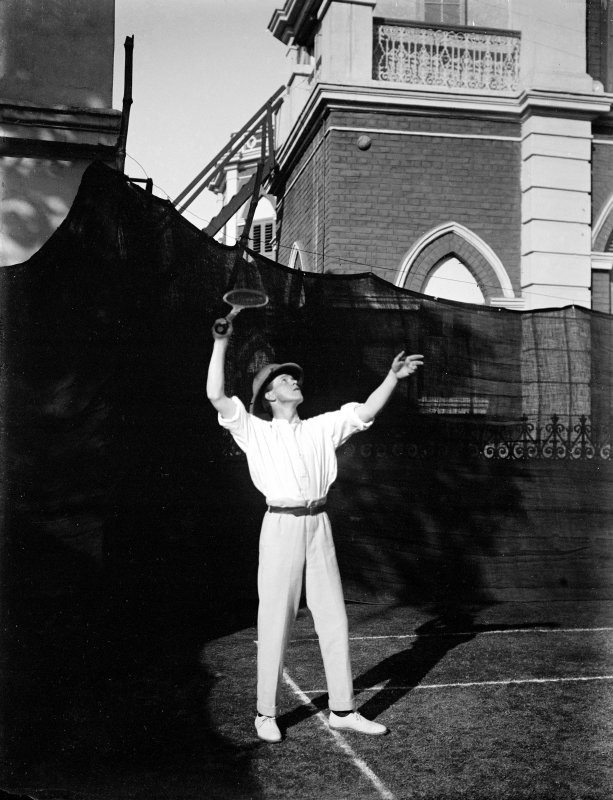
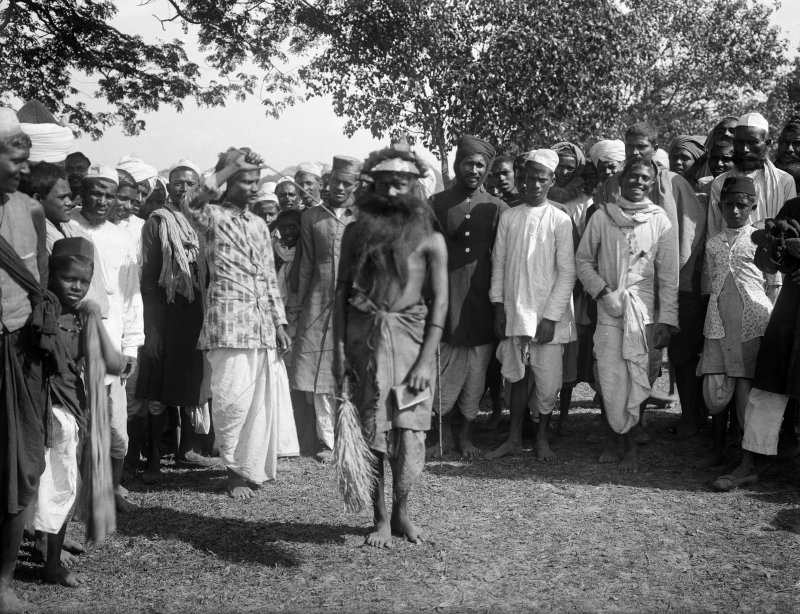 A poorly dressed bearded man is singled out and surrounded by a better dressed crowd.
A poorly dressed bearded man is singled out and surrounded by a better dressed crowd.